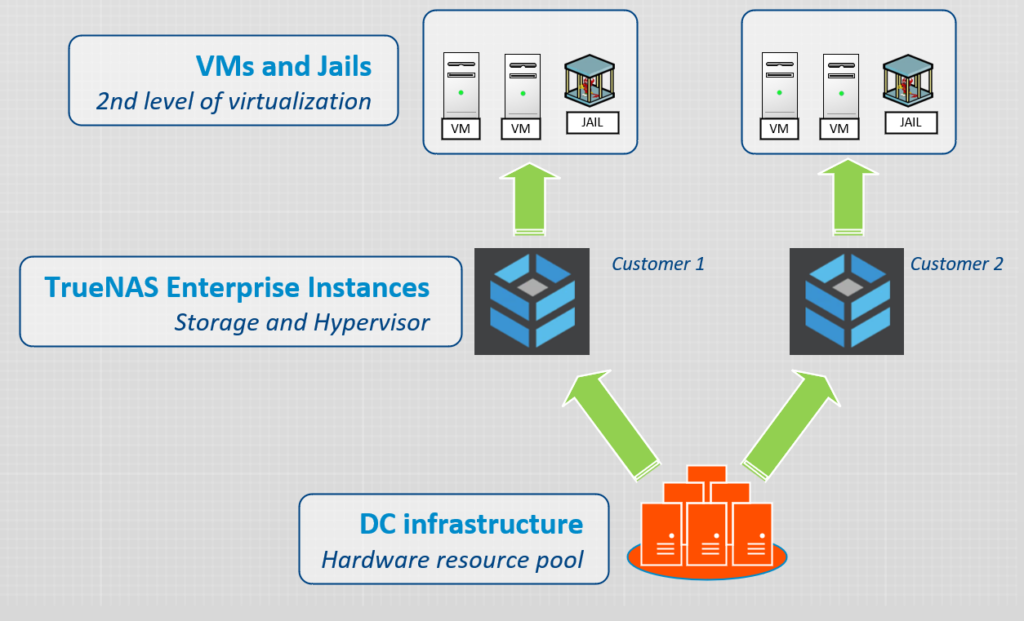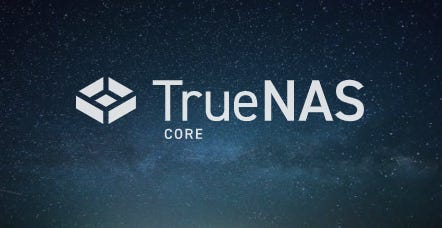TrueNAS - Open Source storage and hypervisor alternative
TrueNAS is the world’s most deployed storage platform, according to their website. I can see why, because their software is really good and feature rich; and most importantly: Free and Open Source; which means that people can use it at home and learn it, like I did.
TrueNAS Software Capabilites
TrueNAS, like pfSense, is based on the FreeBSD operating system. It has tons of features:
All the most common storage protocols:
Also easy configuration of these MGMT file transfer protocols:
FTP / SFTP
TFTP
WebDAV
Rsync
You can use it as a Hypervisor
It has plenty of officially supported, and community supported FreeBSD Jails you can install as plugins.*
Anything you can configure on a FreeBSD platform, can be configured on TrueNAS too. If it is not supported in the GUI, you can configure it through the use of something called tunables.*
Notes:
You can also configure TrueNAS as an iSCSI Initiator, although not officially supported.
I actually discovered TrueNAS when I searched for alternative ways to install Nextcloud; and I found out that you can install it as a FreeBSD Jail inside TrueNAS.
pfSense also has tunables.
TrueNAS hardware
iXsystems have hardware for every need; from the fortune 500 companies down to the home user enthusiasts. If you are looking for a private open source storage solution, I would definitely recommend TrueNAS, regardless of size.
Where I use TrueNAS
I have recently scrapped my whole Big-Tech based server infrastructure in favor of Open-Source. That meant I had to replace my VMWare ESXi hypervisor software on my Supermicro SYS-E200-8D server.
I did not know about TrueNAS before I already spent alot of money on a Synology NAS 8-Bay storage array. Nothing wrong with it, except I wish I had a TrueNAS Mini instead. At least you can download the TrueNAS software for free. I also managed to create an iSCSI link between my TrueNAS server and Synology. I would however strongly advice to set it up on supported hardware. Like with my pfSense experience, I assume it is much more stable when using supported hardware.
I used to have it installed as a Virtual Machine before I removed ESXi; which might not make much sense but it worked fine. I can see a good use case for that in a cloud environment; where you provide infrastructure as a service. Let's say instead of dedicating one hardware appliance for each customer, you can have a TrueNAS, Pure Storage or any other underlying infrastructure as a resource pool. Then you assign a TrueNAS instance per customer, with their own Storage pools, jails and VMs. I have tried this myself, but only with jails, not with VMs. I don't see why it shouldn't work. If I'm allowed to think out loud, I would design it something like this:

The experience so far
Right from the start I was impressed with the GUI and all the features available.
Being used to VMWare, it has been a pain to make things work. Although some things I managed to fix on TrueNAS, I'm not sure if I would have been able to fix on ESXi, like multiple FIB support. Once it all worked, It's awesome. All those headaches, bugs and workarounds I had to endure and discover, was definitely worth it.
For more information on how I managed to setup TrueNAS at home, read these guides:


